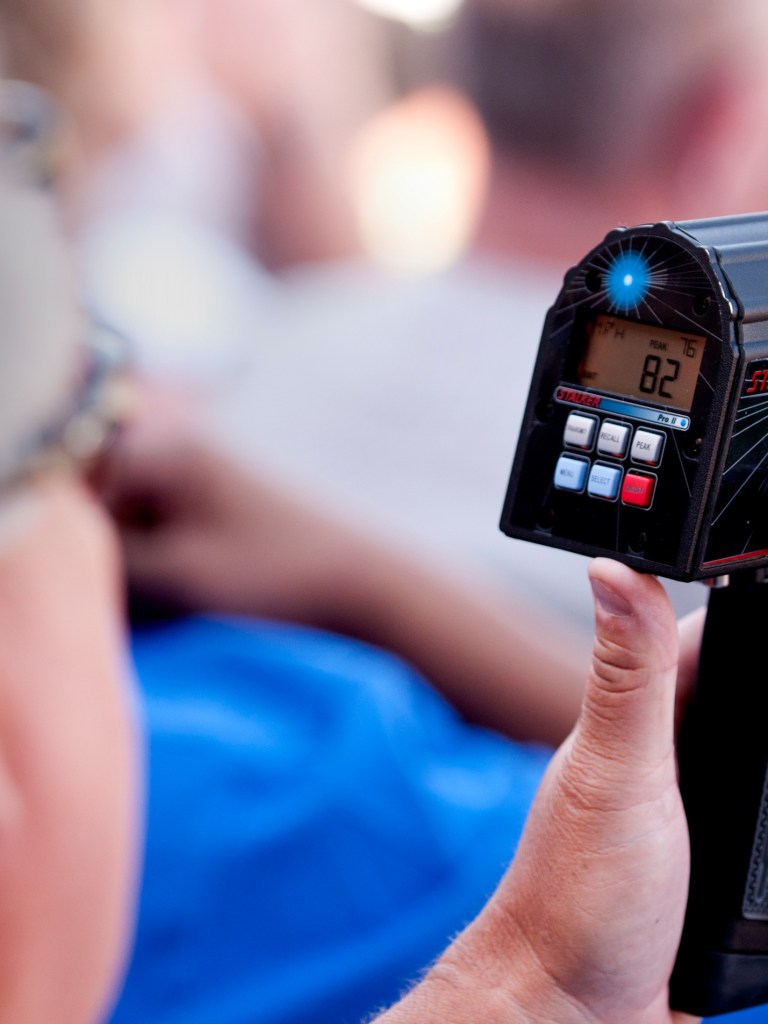Explaining The 20-80 Baseball Scouting Scale


Image credit: (Getty Images)
None of the authors of our annual Prospect Handbook is a scout, but we all speak to plenty of scouts to report on prospects and provide scouting reports on them in the Prospect Handbook. So we use scouts’ lingo, and the 20-80 scouting scale is part of that. Many of these grades are measurable data, such as fastball velocity and speed (usually timed from home to first or in workouts over 60 yards). A fastball grade doesn’t stem solely from its velocity—command and life are crucial elements as well—but throwing 100 mph will earn a player an 80 grade.
Secondary pitches are graded in a similar fashion. The more swings-and-misses a pitch induces from hitters and the sharper the bite of the movement, the better the grade. Velocity steadily has increased over the past decade. Not all that long ago an 88-91 mph fastball was considered major league average, but current data shows it is now below-average. Major league starting pitchers now sit 92-93 mph on average.
You can reduce the scale by 1 mph for lefthanders because they, on average, throw with slightly reduced velocity. Fastballs earn their grades based on the average range of the pitch over the course of a typical outing, not touching or bumping the peak velocity on occasion.
A move to the bullpen complicates in the other direction. Pitchers airing it out for one inning should throw harder than someone trying to last six or seven innings, so add 1-2 mph for relievers. Yes, nowadays an 80 fastball for a reliever needs to sit at 98-99 mph with some movement and command.
Hitting ability is as much a skill as it is a tool, but the physical elements—hand-eye coordination, swing mechanics, bat speed—are key factors in the hit tool grade. Raw power generally is measured by how far a player can hit the ball, but game power is graded by how many home runs the hitter projects to hit in the majors, preferably an average over the course of a career. We have tweaked our power grades based on the recent rise in home run rates.
Arm strength can be evaluated by observing the velocity and carry of throws, measured in workouts with radar guns or measured in games for catchers with pop times—the time it takes from the pop of the ball in the catcher’s mitt to the pop of the ball in the fielder’s glove at second base. Defense takes different factors into account by position but starts with proper footwork and technique, incorporates physical attributes such as hands, short-area quickness and fluid actions, then adds subtle skills such as instincts and anticipation as a last layer.
Not every team uses the wording below. Some use a 2-to-8 scale without half-grades, and others use above-average and plus synonymously.
But for the Handbook, consider this BA’s 20-80 scale.
20: As bad as it gets for a big leaguer. Think Billy Hamilton’s power.
30: Poor, but not unplayable, such as Edwin Encarnacion’s speed.
40: Below-average, such as Eloy Jimenez’s defense, or Trevor Bauer’s control.
45: Fringe-average. Reynaldo Lopez’s control and Kurt Suzuki’s arm qualify.
50: Major league average. Juan Soto’s speed.
55: Above-average. Nick Castellanos’ power.
60: Plus. Alex Bregman’s speed or Stephen Strasburg’s control.
70: Plus-Plus. Among the best tools in the game, such as Corey Seager’s arm, Patrick Corbin’s slider or
Francisco Lindor’s defense.
80: Top of the scale. Some scouts consider only one player’s tool in all of the major leagues to be 80.
Think of Aaron Judge’s power, Byron Buxton’s speed or Aroldis Chapman’s fastball.
20-80 Measurables
SPEED
60-Yard Dash Times (In Seconds)
80. . . . . . . . . < 6.44
70. . . . . . 6.45-6.64
60. . . . . . 6.65-6.84
50. . . . . . 6.85-6.99
40. . . . . . 7.00-7.24
30. . . . . . 7.25-7.44
20. . . . . . . . . > 7.45
SPEED
Home-First (In Secs.)
RHH—LHH
80. . . . 4.00—3.90
70. . . . 4.10—4.00
65. . . . 4.15—4.05
60. . . . 4.20—4.10
55. . . . 4.25—4.15
50. . . . 4.30—4.20
45. . . . 4.35—4.25
40. . . . 4.40—4.30
30. . . . 4.50—4.40
20. . . . 4.60—4.50
POWER
Grade Home Runs
80. . . . . . . . . . . 45+
70. . . . . . . . . 35-44
65. . . . . . . . . 30-34
60. . . . . . . . . 25-29
55. . . . . . . . . 21-24
50. . . . . . . . . 18-20
45. . . . . . . . . 15-17
40. . . . . . . . . 10-14
30. . . . . . . . . . . . 5-9
20. . . . . . . . . . . . 0-4
FASTBALL
Velocity (Starters)
Grade Velocity
80. . . . . . 97+ mph
70. . . . . . . . . . . . 96
65. . . . . . . . . . . . 95
60. . . . . . . . . . . . 94
55. . . . . . . . . . . . 93
50. . . . . . . . . 91-92
45. . . . . . . . . . . . 90
40. . . . . . . . . 88-89
30. . . . . . . . . 86-87
20. . . . . 85 or less
ARM STRENGTH
Catcher: Pop Times To Second Base (In Seconds)
80. . . . . . . . . < 1.74
70. . . . . . 1.75-1.84
60. . . . . . 1.85-1.94
50. . . . . . 1.95-2.04
40. . . . . . 2.05-2.14
30. . . . . . 2.15-2.24
20. . . . . . . . . > 2.25

Comments are closed.